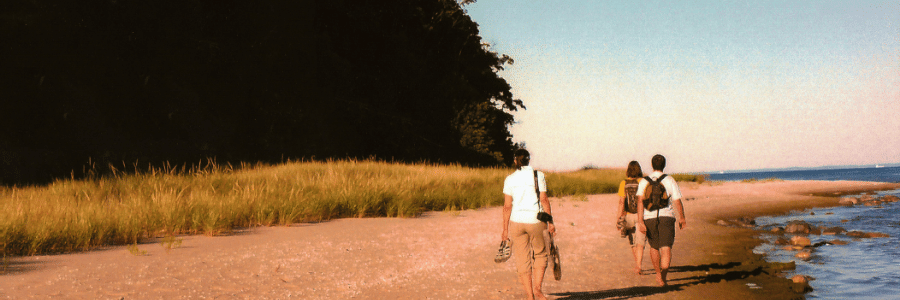How to De-Winterize Your RV for Summer Camping

Let’s face it: de-winterizing your RV is way more exciting than winterizing it! Getting ready to start the camping season is definitely our favourite time of the year. Our staff is made up of RV lovers and campers just like you, and we’re here to help guide you into the season with some pro tips.
Out of Storage and Into the Light
Depending on where your RV is stored, it likely makes sense to take your unit out of storage first. Once you have ample light and room to check the inside and outside of your camper thoroughly, you’ll be able to tell how it did over the winter - especially here in BC!
Checking your RV for any damage or moisture on the exterior is a dull but important part of getting ready for the summer. Inspect your trailer for simple things:
-Signs of water damage
-Cracks to the body
-Damage underneath or broken pipes, tanks, etc.
-Damage or rust on the A/C unit
-Missing caps or closures
Caulking and Your RV’s Seals
Around all of your RV’s windows, vents, and doors, check the caulking or sealant. This requires a physical and visual inspection. When looking at the seals, check for signs of age, cracks, and potential water penetration. With all the rain the Chilliwack area gets in the winter, this is crucial!
Also run your index finger across all of the caulk for the same reasons. If you encounter any issues, this is a good sign that it’s time to re-seal that area before moving on. To do so, grab an appropriately-rated silicone-based sealant with a caulk gun and follow the instructions, removing any excess.
This is a good practice when opening up a new RV or new-to-you unit as well, even if it’s prepared for the season.
Test Electronics
If you have a battery tester, test the battery. Ideally, your battery should be removed and stored at room temperature on a battery pack over the winter, rather than in the cold and connected.
When connected to power (and before, for your battery!), check that all of your lights and outlets are producing light or power.
Check that wires from TVs and other electronics have not been damaged by water or the cold. Finding cracks or water in and around electronics can be dangerous. While this isn’t common, we always suggest that users are careful in doing so.
Drain Antifreeze & Open Water Service
Whether you winterized your RV or you had a dealer technician (such as O’Connor) do so, this is often the part that people find most intimidating to deal with.
Before the winter, water lines are completely drained and filled with antifreeze. For incoming and outgoing water and wastewater, the valves are adjusted to “point” water in the opposite direction. This helps ensure that any excess water or antifreeze doesn’t end up where it shouldn’t.
Getting ready for summer, we need to undo this. Each RV is different in terms of where city water (your “usable” water) hookups, wastewater, and drains are connecting. Checking all areas where water flows to ensure that your valves are pointed in the right direction is key here. You can most often find these relatively close to fixtures such as kitchen sinks and bathrooms.
Tips for finding your valves:
-
Kitchen sink valves are often located directly under the sink and labelled accordingly
-
Bathroom sink valves are usually under the sink or with other bathroom water sources
-
Toilet, shower, and general bathroom vales can often be found in a “hidden” compartment close to the bathroom - sometimes under close bunks or near exterior kitchen options
-
If you’re not sure, consult your owners manual for more information or visit us here at O’Connor RV!
Once you’ve found your valves, note that they’re (or should be) full of antifreeze. Having your water hookups connected and ready to roll is the next step. From there, switch those valves over and run water through all of your pipes. Antifreeze is often purple, blue, or red and you should see no signs of these colours before using your water for any potable purpose.
We recommend letting the water run through for far longer than you think may be needed just to be sure. A great way to monitor this is also to use a clear “L” on your wastewater tubes so that you can see when everything is running clear.
Pro tip: make sure that you’re connecting your incoming city or fresh water into the right tank! We have heard horror stories of this being accidentally connected to wastewater filters and pushing excrement up through the toilet and sinks! No thank you!
Once you’ve completed these steps, test that your hot and cold water is working appropriately. This is the easiest way to know that your hot water heater (typically using electricity or propane) is functioning properly as well.
Get Ready to Camp!
The fun part begins! Once all of your safety and functionality tasks have been completed, you’re ready to fill your RV up with decorations, snacks, and your family!
Have fun camping this 2022 season; O’Connor RV sure will! If you have any at all, please free free to contact us directly. Our technicians and sales team are always eager to assist in your camping adventures.